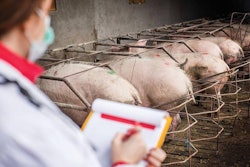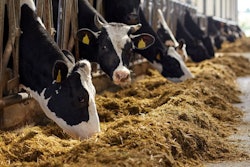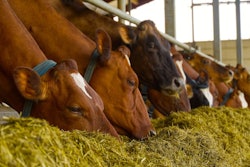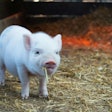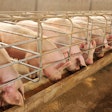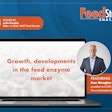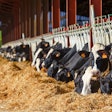As producers seek to reduce feed costs, research suggests alternative ingredients can be utilized without impeding animal performance.
Inflation and environmental concerns are driving increased interest in alternative feed ingredients. Compared to soybean meal or corn, for example, alternative ingredients typically have lower crude protein content and fat digestibility, as well as higher fiber content. For this reason, producers have been partially adding ingredients, such as rapeseed and sunflower seed meal, to their rations with some reported success, but total replacement has reduced animal performance and significantly increased costs.
A concept study presented by Danisco Animal Nutrition & Health at the 2022 Poultry Science Association (PSA) Annual Meeting demonstrated encouraging findings on the utilization of alternative ingredients. Preliminary results suggest soybean meal can be completely replaced in feed formulations while still maintaining animal performance and feed costs.
Dr. Arno de Kreij, Danisco Animal Nutrition & Health, joins the Chat to discuss this study and how the findings can help producers stay competitive during this period of high raw material costs.
How feed producers can stay competitive despite economic challenges [VIDEO] from Steven T Kilger on Vimeo.
Transcription of Feed Strategy Chat with Dr. Arno de Kreij, ASPAC marketing Director, Danisco Animal Nutrition & Health
Jackie Roembke, editor in chief, WATT Feed Brands/Feed Strategy: Hi, everyone. Welcome to Feed Strategy Chat. I’m your host, Jackie Roembke, editor in chief of WATT Feed Brands and Feed Strategy magazine.
This edition of Feed Strategy Chat is brought to you by Danisco Animal Nutrition & Health, part of IFF, an industry leader in nutritional health solutions with a comprehensive portfolio of feed enzymes, betaine, phytogenics and probiotics.
Today we’re joined on Zoom by Dr. Arno de Kreij, ASPAC marketing Director with Danisco Animal Nutrition & Health. He’s here to discuss the ways poultry and pig producers can remain competitive despite today’s economic environment and rising feed costs.
Dr. Arno de Kreij, ASPAC marketing director, Danisco Animal Nutrition & Health: Hi, Jackie. I’m fine. Thanks for having me today.
Roembke: Thanks for being here. Well, let’s get right into it. What are the unique disadvantages of using alternative ingredients in feed formulations?
de Kreij: Well, we need to keep in mind that alternative ingredients usually have low protein digestibility, but also higher phytate and especially higher fiber content. Therefore it is not surprising that while partial replacement with ingredients, such as rapeseed sunflower meal, had had some success, producers so far have not been able to adopt completely soy-free diet formulations due to reduced animal performance and a significant increase in cost.
Roembke: Please provide a brief overview of the proof-of-concept study presented at the 2022 Poultry Science Association’s annual meeting.
de Kreij: Yes, at the Poultry Science Association meeting in San Antonio, Texas, in July of this year, we presented a “proof of concept” of total soy-free diets in male broilers on day one. The reduced protein diets performed really well, and our best performing treatment was economically equivalent to the soy diet and performance was actually very close to the breed’s objectives.
We looked at various feed additive strategies and we found that the combination of a highly efficacious phytase, combined with the xylanase, beta-glucanase, a protease and a three-strain probiotic was the best strategy to mitigate the negative effects of these alternative ingredients.
Roembke: Given the nutritional profile and costs of alternative ingredients and the fact that they’re variable based on location, other circumstances, how does research like this add customer value?
de Kreij: So producers will be able to include a higher level of alternative ingredients in animal diets while maintaining performance. Using a combination of effective enzymes and probiotics helps combat the negative effects caused by the variability in these ingredients.
We really hope to inspire the industry and encourage pushing the nutritional boundaries together with the right additive strategy.
Roembke: How do these alternative diets compare in terms of costs? How is it calculated?
de Kreij: That is a really good point. Of course, we looked at cost-per-kilogram weight gain, which was equivalent to the soybean containing control diet. But we need to keep in mind that although feed cost-per-kilogram weight gain is important. is only relevant as long as performance is maintained. After all, any loss in performance has a strong negative financial impact for the farmer. And it’s interesting to see that the final bodyweight gain in our study for the soy-free diets was actually comparable to the breed performance objectives, which was a very nice result.
Roembke: Excellent. Well, thank you so much for this information. If you’d like more information about IFF, please visit animalnutrition.dupont.com.
Thank you so much, Arno, and thanks to you for tuning in.

